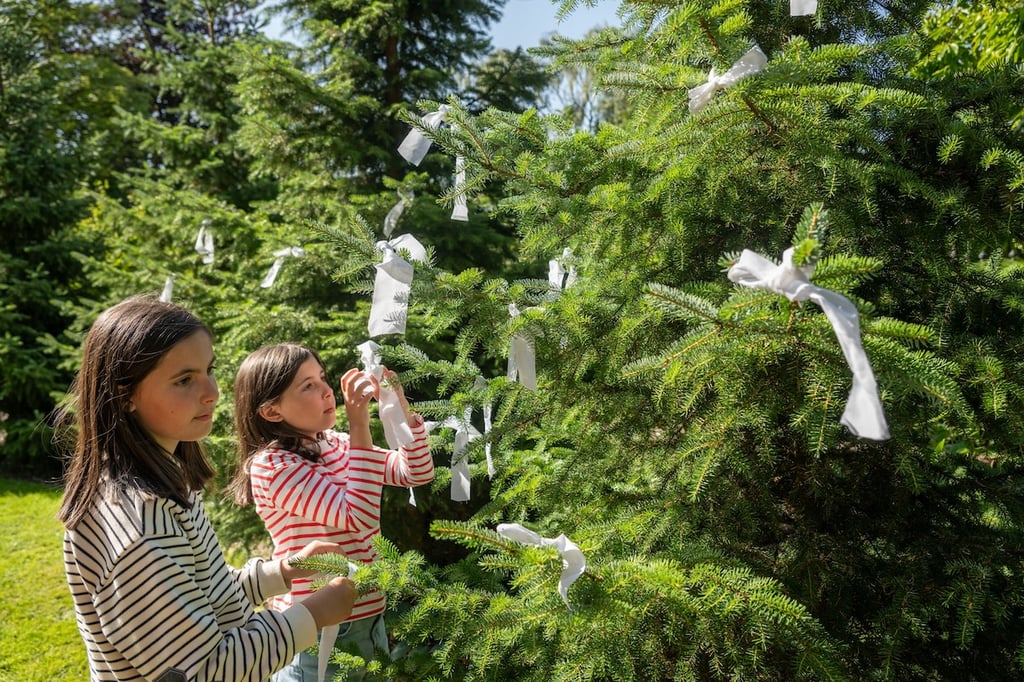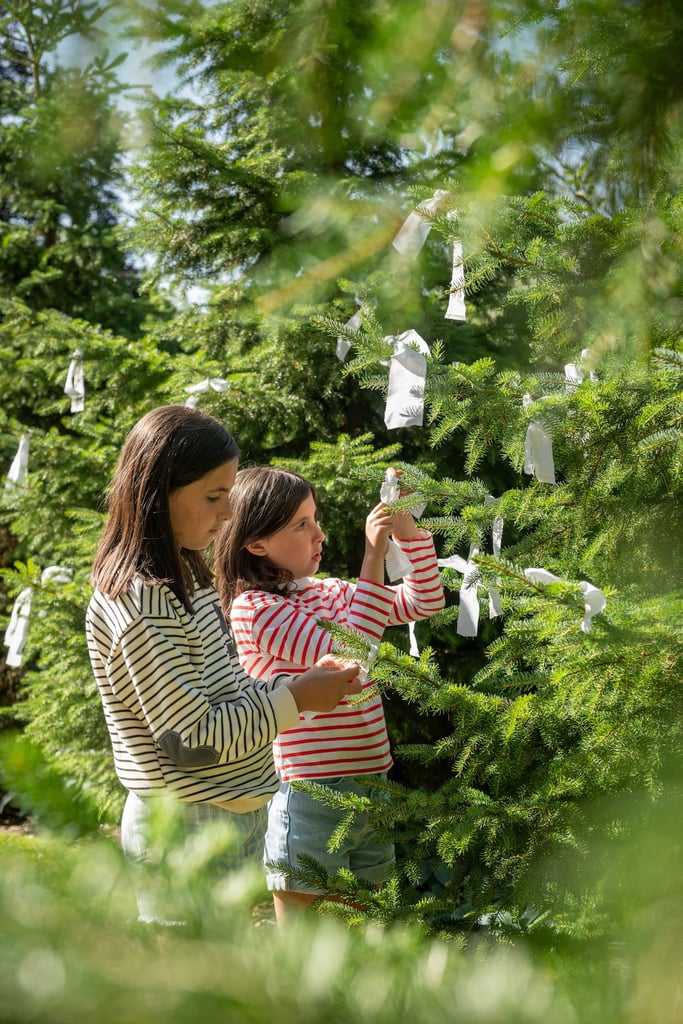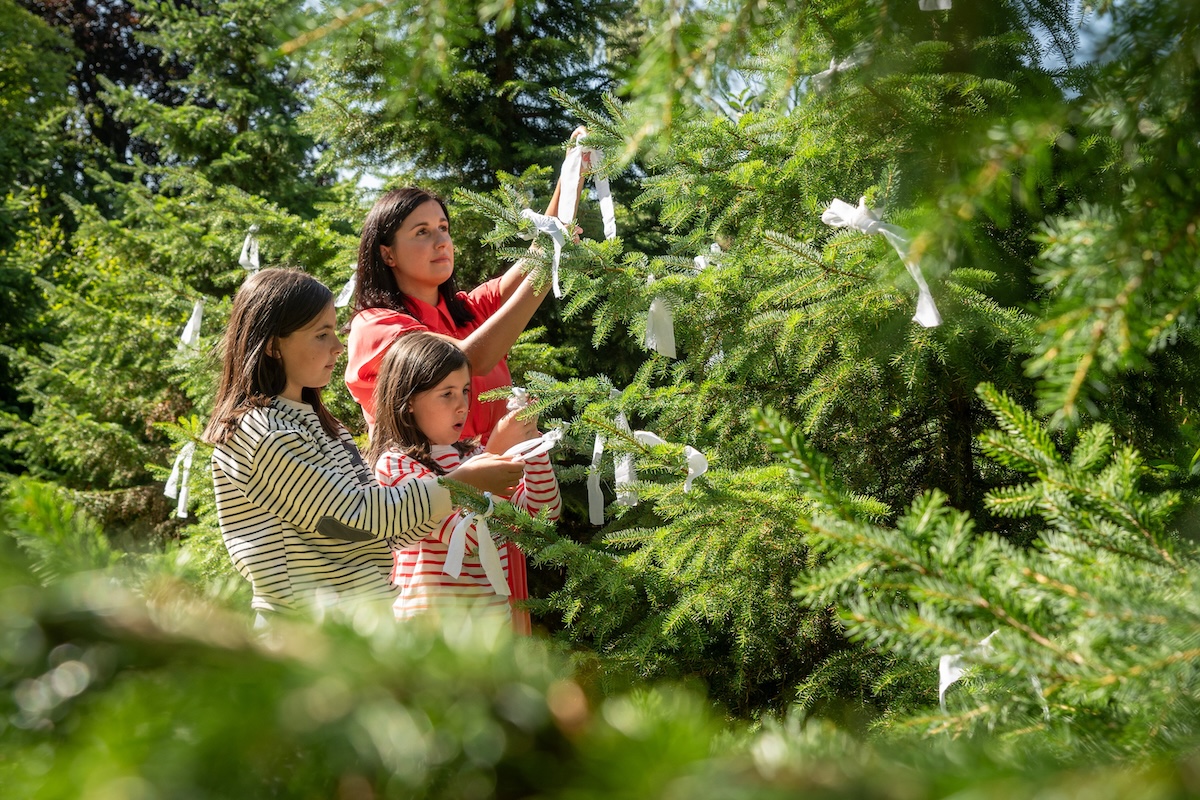Scotland marked the 30th anniversary of the genocide in Srebrenica on Friday with a solemn commemoration at the Royal Botanic Garden Edinburgh (RBGE).
The event, organised by genocide education charity Beyond Srebrenica, honoured the memory of more than 8,300 Bosniak men and boys murdered in Srebrenica in July 1995 and reflect on the broader Bosnian war that claimed over 100,000 lives and displaced more than 2 million people – including thousands who sought refuge in the UK.
The youngest of the victims was two days old.
Sabina Kadić-Mackenzie, chair of Beyond Srebrenica and survivor of the war in Bosnia, said: “This tree carries deep symbolic meaning – and chilling parallels to the human experience of war and genocide Like so many Bosnians, it found a way to survive despite everything that was done to erase it.
“On the 30th anniversary of the genocide, we remember not just the loss and horror – but the endurance, and the hope it takes to recover from the rubble of war. This tree now thrives in Scotland, just as so many of us Bosnians have. Its roots now touch Scottish soil, linking our two nations in remembrance and in hope.
“The spruce stands as a living memorial to both environmental and human resilience – and Scotland’s quiet but enduring connection to Bosnia’s story.”
During the ceremony, guests tied white ribbons to the tree – a quiet act of solidarity and remembrance.
Sabina, who is a survivor of the war, continued: “This Spruce is more than a tree. It is a living memorial to all that we lost, and all that we refused to let be destroyed. It stands as a symbol of our survival, and of the profound connection between Bosnia and Scotland forged in the most painful of times.
“The tree stands now not only as a symbol of ecological resilience but also as a quiet testament to the resilience and grace of the Bosnian people who, like it, endured immense suffering yet refused to disappear.”
Speaking at the ceremony, Simon Milne MBE, Regius Keeper of the Royal Botanic Garden Edinburgh, said: “Rare and resilient, this tree is now listed as endangered. It survives in only a handful of shrinking mountain refuges in Bosnia and Herzegovina and Serbia. Its story mirrors that of this region – scarred by war, threatened by change, but still standing.
“Today, the tree grows far from its homeland, in botanic gardens and conservation sites across Europe – thanks to the work of organisations like the Royal Botanic Garden Edinburgh. But like memory, it cannot thrive without care. As we protect these rare trees, let us also protect the truth.”
The commemorative event was hosted by Beyond Srebrenica, a Scotland-based organisation working to ensure that the memory of the genocide endures and its lessons are never forgotten.
 11th July 2025
11th July 2025
Royal Botanic Gardens Edinburgh, Scotland.
Elsa (11) and Olive (8) Kadic-Mackenzie , at the Royal Botanic Garden Edinburgh, pictured as white ribbons are tied to a group of Picea omorika tree, a rare and ancient conifer native to Bosnia and Herzegovina. Pic Phil Wilkinson / Beyond Srebrenica
 11th July 2025
11th July 2025
Royal Botanic Gardens Edinburgh, Scotland.
Elsa (11) and Olive (8) Kadic-Mackenzie , at the Royal Botanic Garden Edinburgh, pictured as white ribbons are tied to a group of Picea omorika tree, a rare and ancient conifer native to Bosnia and Herzegovina. Pic Phil Wilkinson
 11th July 2025
11th July 2025
Royal Botanic Gardens Edinburgh, Scotland.
Sabina Kadic-Mackenzie with daughters Elsa (11) and Olive (8) at the Royal Botanic Garden Edinburgh, pictured as white ribbons are tied to a group of Picea omorika tree, a rare and ancient conifer native to Bosnia and Herzegovina.
They joined charity Beyond Srebrenica and members of the Bosnian community to mark the 30th anniversary of the Bosnian Genocide in Srebrenica. 11 July is the UN international day of remembrance and reflection for the victims of the genocide.
Pic Phil Wilkinson / Beyond Srebrenica
Like Loading…
Related

